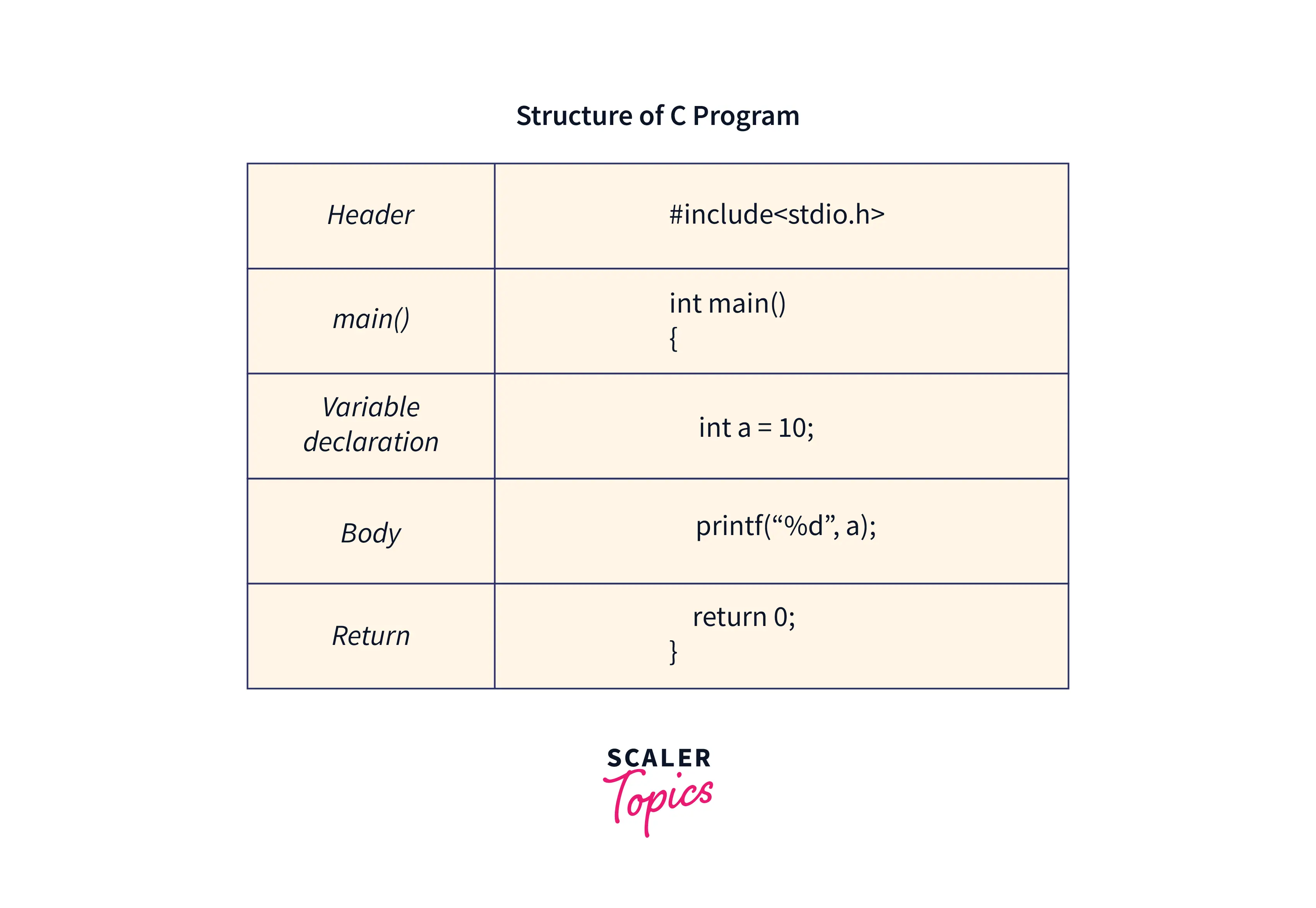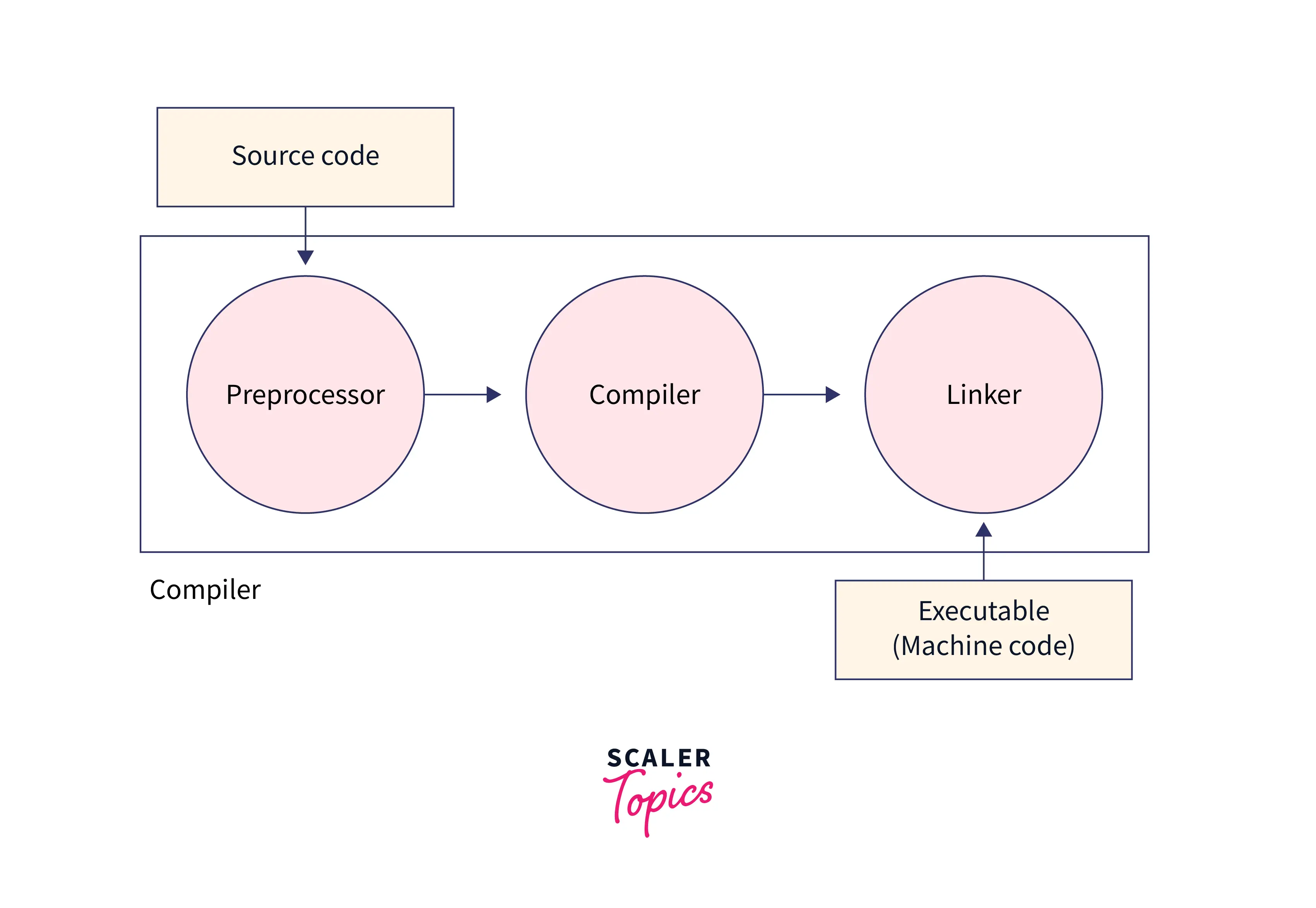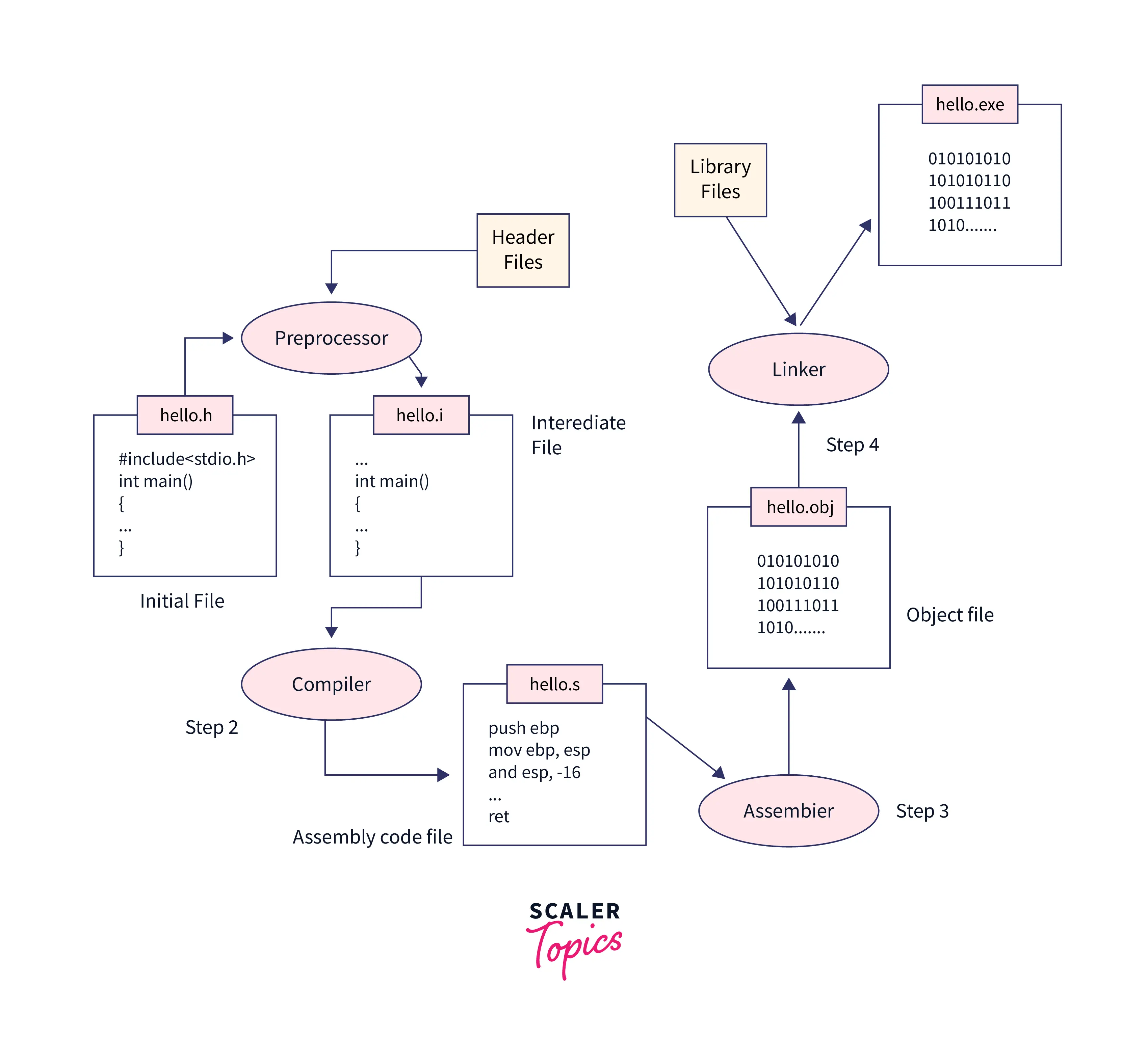What is C Programming Language?

What is C Language?
C is a procedural and portable programming language, which means it executes step by step and it can be moved from one platform to another platform with minimal changes or no changes at all. C programming is the compiled language and faster than the languages like Java, Python, etc. C programming is widely used for multiple purposes, It is known as the base of other languages because it shares a similar syntax, but more than that most of the compilers, interpreters, and runtime engines of other languages are written using the C programming language. C programming language can be used to develop various things like operating systems, compilers, embedded systems, databases, and much more.
History of C Language
The C programming language is evolved throughout history. To understand what is C language it is important to understand the history of C language -
- In the year 1960, there was a programming language called 'ALGOL' which was largely used in the European countries. 'ALGOL' was the first structured programming language.
- Then later in the year 1967, 'BCPL' programming language is developed by Martin Richards which stands for Basic Combined Programming Language the main agenda behind the 'BCPL' is to have the language for system software. It is the first language used to build the UNIX operating system.
- Just after 3 years in 1970, the new language called 'B' is introduced by Ken Thompson, 'B' is developed with the help of the UNIX operating system at AT&T and Bell Laboratories. Both the 'B' and 'BCPL' are system programming languages and 'B' is made from the 'BCPL'.
- In the year 1972, the computer scientist named Dennis Ritchie created a new programming language called the 'C' programming language. The C programming language is developed using 'ALGOL', 'BCPL' and 'B' programming languages apart from that it brings new features and concepts to the programming.
- As C very comes for the UNIX operating system and most of the features in UNIX are added with the help of C language it became limited for the UNIX operating system. But in later years it became a cross-platform language. Then it started to get spread across the globe for commercial and development purposes.
- In later years C programming language evolved a lot, and the community started to build and add new features to the language. Multiple versions of language started to come out.
- In the year 1989, to make sure that the C programming language will remain standard the American National Standards Institute (ANSI) defined certain standards for the C programming language. Later in the year, 1990 C programming language is also got approved by International Standards Organization (ISO).
What is Required in each C Program?
Every C program has some required components in its structure. This structure is important and every C program should be written in this structure only, otherwise, the compiler will throw the error. The entire structure and its components for a C program are as shown in the following image -

1. Inclusion of Header File
In every program, we need to include the header files. The header files are nothing but the file with the .h extension which contains various function definitions. Here in the case of the stdio.h file contains various function definitions which we can use for input and output operations.
2. Main Function Declaration
In every C program we need to have the main() function it is the entry point for a program and program execution starts from here.
3. Variable Declaration
We need the variables for various purposes like processing data or using them with the functions. In C programming language we always need to declare the variables before any operation in function.
4. Body of C Program
We write a program to accomplish certain tasks or operations. All this code to manipulate, process, search, or sorting, etc. is written in the body part of the program.
5. Return Statement
The return statement is the last part of a C program or we say C function where we return the value of the associated return type of a function. It generally represents the end of the function and returned the control from the function. For example, in the above image, we have int as the return type for the main function so we are returning the 0 which is of type integer. If the return type is of type void then there will be no return statement.
C Basic Commands
The following table shows the basic commands in programming -
| C basic commands | Explanation |
|---|---|
| #include <stdio.h> | This command includes the standard input-output library which can be used to perform the input and output operations. |
| int main() | Every C program starts to execute from the main function. |
| { | This opening curly brace indicates the beginning of the main function. |
| /* Multiline comment */ | This is the multiline comment. Whatever we write inside the /* */ will not get executed and skipped by the compiler. |
| printf(“Hello, World! “); | printf() function is a part of stdio.h library which is used to show the output on the console. It prints the Hello, World! on the console. |
| getch(); | getch() function is used to get the character from the keyboard. It also comes from stdio.h library. The program stops its execution until we give certain input. |
| return 0; | This command returns the 0, it denotes the success of the program and terminates the execution. |
| } | This closing curly brace indicated the end of the main function. |
Where is C Used? Key Applications
C programming language is used in many places -
- Entire UNIX operating system is written with the help of a C programming language.
- The C programming language was introduced to make the development of system applications easier. So it is heavily used in the development of system applications.
- C language is also widely used in the development of embedded systems and IoT (Internet of Things) systems.
- So many databases like MySQL are written in the C programming language.
- C is also used in the development of the compilers for various programming languages.
Why Learn C Language?
We saw what is C language, now let's see Why to learn the C language. C programming language is considered the base of so many other programming languages and it shares few of the same syntax structure and programming concepts. C is so much close to the memory of a system so by learning the C programming language we can learn a lot about the internal workings of a system.
C programming has the concept of pointers which teaches so much about internal. If someone wants to work building the compilers, and operating systems then C is one of the great options. There are various tools in C programming language with which we can build the system software as well.
When we are working with complex programs we can create the function libraries and import them whenever we want so that it becomes easier to perform those complex tasks.
There are various compilers available for the C programming language and due to its portability, we can run the same C program on a variety of systems.
How Does C Programming Language Works?
When we write the source code in the C programming language it goes through multiple steps to become the executable machine code as shown in the below image.

C is a compiled language and makes use of a compiler to get converted from source code to executable machine code.
- The C source code first goes to the preprocessor where all the mentioned libraries like stdio.h gets included in the program.
- Then the source code gets converted to the machine-understandable code with the help of a compiler. It gives the object file back after the successful compilation.
- The object file given by the compiler gets linked with each other and other library files with the help of the linker to get the executable file for the machine to execute.
See the following diagram where the compilation process is explained in detail -

- First we have the C source code with .c extension. We pass this file to the preprocessor where all header files and micros get attached to the source code.
- After preprocessing we get the intermediate file which we pass to the compiler. The compiler creates the assembly code file for the assembler.
- Assembler converts the assembly file into the object file where the entire program is in the form of binary numbers.
- This object file gets linked with the library file with the help of linker and gives the executable file with .exe extension.
- Now this executable file can be executed by the computer to get desired results.
Learn more
To learn more about the History of the C language refer to the following article -
Conclusion
- In this article, we saw what is C language, its history, syntax, and required components in the language.
- C programming language shares similar syntax with so many other languages and it is heavily used in systems programming that's why it is a good idea to learn the C programming language.
- The C programming language is developed using 'ALGOL', 'BCPL', and 'B' programming languages. It is compiled language written in a particular structure.
- C programming language is standardized by the ANSI(American National Standards Institute) and approved by ISO(International Standards Organization).
- There are some required components in the program of C like header, main function, variable declaration, body, and return statement.
- The C programming language has different commands to perform various operations including the header file, printing the string, taking input of a character, and much more.
- The C program executes in the various steps, and the compiler helps to convert the C source code to the machine-understandable code.
